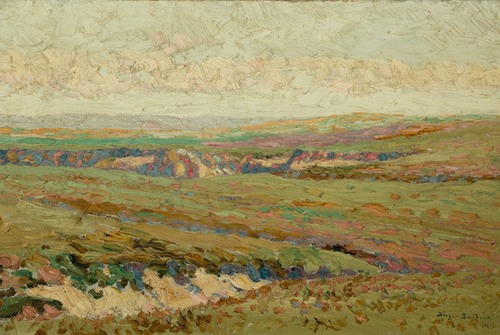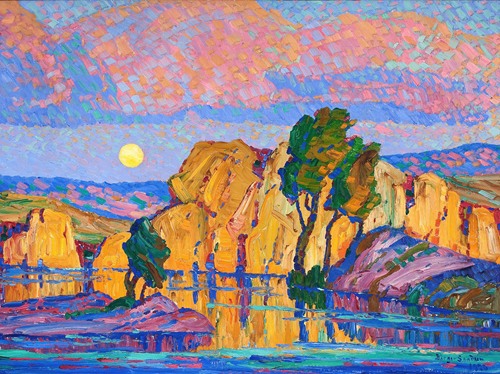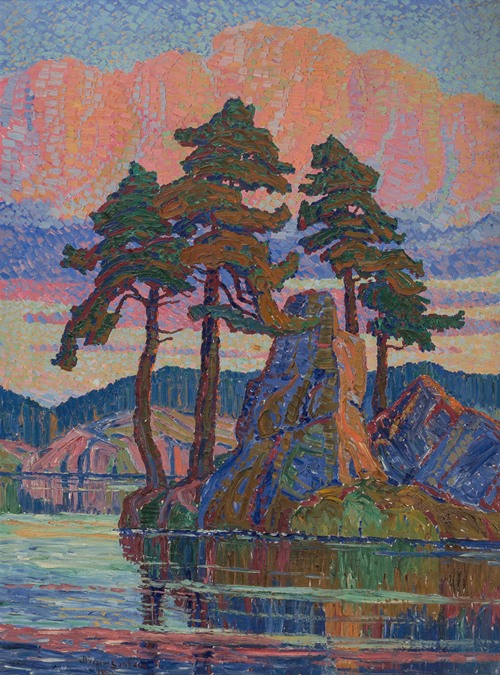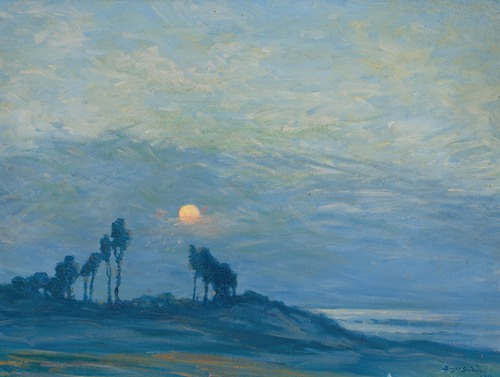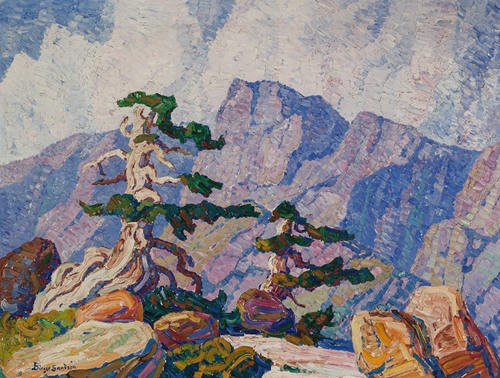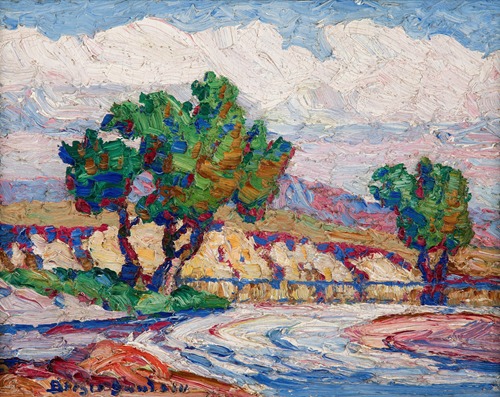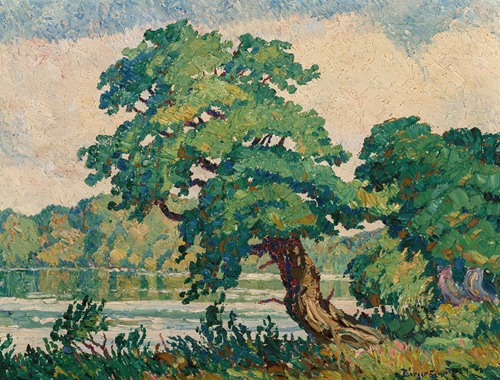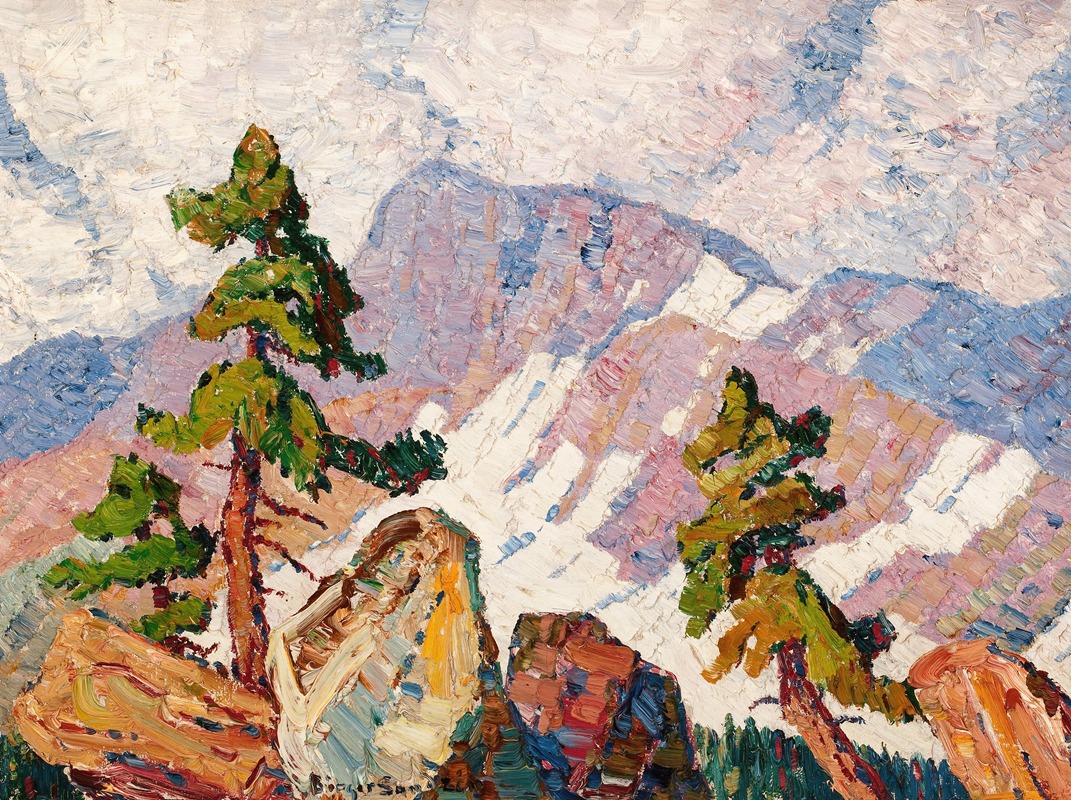
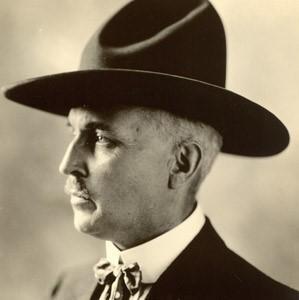
Sven Birger Sandzén, known more commonly as Birger Sandzén, was an American painter best known for his landscapes. He produced most of his work while working as an art professor at Bethany College, Lindsborg, Kansas.
Sandzén was born in Blidsberg, Ulricehamn Municipality, Västra Götaland County, Sweden. His parents were Johan Petter Sandzén and Clara Carolina Elisabeth Sylvén. His father was a parish priest and his mother an accomplished watercolorist. A protégé of Anders Zorn, Sandzén showed an interest in art from an early age, and at the age of 10 joined Skara Cathedral School (Katedralskolan), to study art under the tutelage of Olof Erlandsson (1845-1916), a graduate of the Royal Swedish Academy of Arts.
After graduating in 1890, Sandzén studied for a short time at the University of Lund before moving to Stockholm. It was his intention to enroll at the Royal Swedish Academy of Arts. However, the waiting list proved too long for him. Instead, he sought out and joined a group of young artists who were studying under Anders Zorn, Richard Bergh and Per Hasselberg. This group would later be known as the Artists League (Konstnärsförbundet). One of his fellow students and ultimately a good friend, was Carl Lotave.
At the end of his studies, Zorn and Bergh recommended that Sandzén complete his painting studies in Paris. In 1894, Sandzén left Stockholm to study under Edmond Aman-Jean who introduced Sandzén to pointillism. Aman-Jean was closely associated with Ernest Laurent and Georges Seurat in promoting impressionism. Sandzén's early work displays these influences, along with a tonalist approach.
Later in 1894, Sandzén accepted a teaching post from Carl Aaron Swensson President of Bethany College. He moved to Lindsborg, Kansas which would be his home for the rest of his life. He remained on the faculty for fifty-two years, teaching various languages as well as art in his first year at Bethany. Sandzén would go on to become the head of art at the college until his retirement in 1946. He recommended that his friend Carl Lotave fill an open position at Bethany and with Lotave and N.G. Malm, they started the first exhibition of Swedish-American art. It became the annual Midwest Art Exhibition.
Sandzén was taken with the Smoky Hill River Valley area of central Kansas, which provided much of the subject matter for his paintings. Many of his paintings feature the great landscapes of the American Southwest. Sandzén painted many landscape scenes, including depictions of the Rocky Mountain National Park and Yellowstone National Park, both favorite venues for his work. He also spent considerable time painting landscapes within Kansas. According to curator Bill North, he frequently painted landscapes from Graham County, Kansas, where his wife's parents moved in 1906.
Although most of his works are in oil, Sandzén was also a talented printmaker and watercolorist Sandzén was highly prolific producing at least 2,890 oil paintings as well as hundreds of different prints and watercolors and drawings. He adopted a thick, textural, impasto style of painting, with the use of strong colourful brushstrokes. His bold use of stroke and color has been described variously as post-Impressionism, expressionism and fauvism. His woodcuts and linocuts were to have a lasting effect on artists to come. His artwork has been compared to Vincent van Gogh and Paul Cézanne.
In 1897, Sandzén met Alfrida Leksell, a Bethany College piano student from McPherson, Kansas. They married in 1900 and had one child, Margarita Elizabeth Greenough (1909-1993). He died during 1954 in Lindsborg, Kansas.


